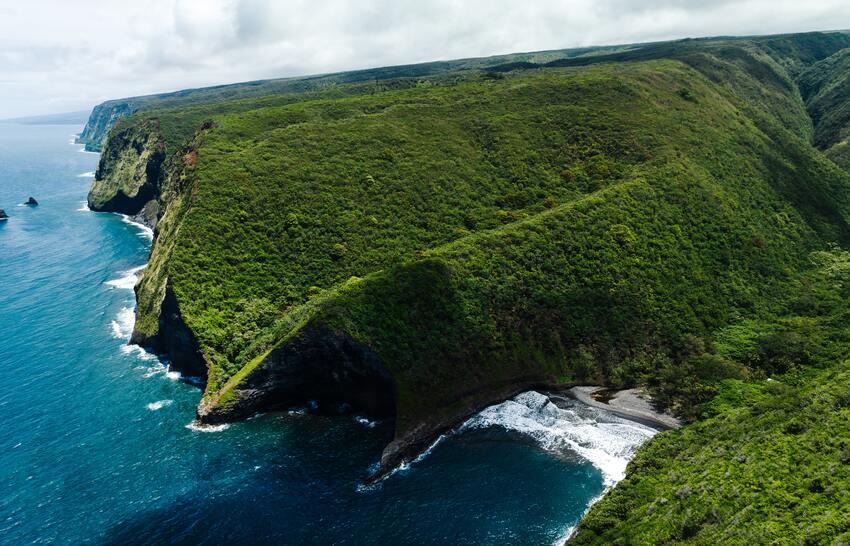Hawaii, with its stunning landscapes, warm tropical climate, and diverse ecosystems, is a dream destination for outdoor enthusiasts and nature lovers. The Big Island, officially known as Hawaii Island, offers an abundance of opportunities for hiking, making it a paradise for avid hikers. In this complete guide, we will take you step by step through the enchanting world of hiking on the Big Island, ensuring you have an unforgettable experience.

Why Hiking in Hawaii?
Hiking in Hawaii offers a unique blend of adventure and natural beauty. The islands are home to breathtaking waterfalls, lush rainforests, active volcanoes, rugged coastlines, and panoramic vistas. The combination of scenic trails and favorable weather conditions makes it an ideal destination for hiking enthusiasts of all levels.
The Big Island: A Hiker’s Paradise
The Big Island, the largest of the Hawaiian Islands, is a hiker’s paradise with a diverse range of landscapes. From the snow-capped peaks of Mauna Kea to the volcanic wonderland of Hawaii Volcanoes National Park, the island offers an array of hiking trails that cater to different preferences and abilities.
Essential Hiking Gear
Before embarking on your hiking adventure, it’s crucial to have the right gear. Here are some essential items to pack:
- Sturdy hiking boots or shoes
- Comfortable and moisture-wicking clothing
- Sunscreen and a hat for sun protection
- Ample water and snacks
- Navigation tools such as a map and compass
- First aid kit and emergency supplies
Safety Tips for Hiking in Hawaii
When hiking in Hawaii, it’s essential to prioritize safety. Here are some tips to ensure a safe and enjoyable hiking experience:
- Always check weather conditions and trail closures before heading out.
- Inform someone about your hiking plans, including the trail you’ll be on and your estimated return time.
- Stay hydrated and bring enough water to last throughout the hike.
- Use sunscreen, wear appropriate clothing, and protect yourself from insects and wildlife.
- Stick to marked trails and avoid venturing into restricted or dangerous areas.
- Be mindful of your surroundings and watch out for loose rocks, steep cliffs, or slippery surfaces.
- Carry a whistle, flashlight, and extra batteries in case of emergencies.
- Respect wildlife and maintain a safe distance. Do not feed or approach animals.
- If encountering a stream or river, assess water conditions and exercise caution when crossing.
- Be prepared for sudden weather changes and carry necessary gear like rain jackets or extra layers.
- Practice Leave No Trace principles by minimizing your impact on the environment and packing out all trash.
Best Time to Hike on the Big Island
The Big Island’s weather is relatively stable year-round, making it possible to hike at any time. However, certain seasons offer more favorable conditions for hiking. The months of April to October generally experience drier weather, while November to March may bring more rain. It’s advisable to check weather forecasts and trail conditions before planning your hike.
Wildlife and Natural Wonders
While hiking on the Big Island, you’ll have the opportunity to encounter a rich variety of wildlife and natural wonders. From vibrant tropical flora to colorful bird species, the island’s biodiversity is awe-inspiring. Keep an eye out for native plants like the ohia lehua or the endangered nene goose, Hawaii’s state bird. Marvel at cascading waterfalls, dramatic sea cliffs, and stunning lava formations, which are testaments to the island’s volcanic origins.
Unique Experiences for Hiking in Hawaii
Hiking on the Big Island offers unique experiences that go beyond scenic beauty. You may witness the awe-inspiring sight of lava flowing into the ocean, creating new land in front of your eyes. Explore hidden caves, discover ancient petroglyphs, or stumble upon sacred sites with cultural significance. Immerse yourself in the island’s rich history and connect with its vibrant traditions.
Capturing Memories: Photography Tips
The Big Island provides endless opportunities for capturing stunning photographs. Here are a few tips to enhance your photography experience:
- Experiment with different angles and perspectives to showcase the vastness and grandeur of the landscapes.
- Use natural light to your advantage, especially during sunrise and sunset.
- Include hikers or local flora in your shots to add scale and depth to the images.
- Take advantage of the island’s unique geological features, such as lava fields or black sand beaches.
- Be respectful of cultural sites and avoid photographing sensitive areas without permission.
Rest and Refreshment: Picnic Spots
During your hikes, take time to rest and recharge at scenic picnic spots. The Big Island offers numerous picturesque locations where you can enjoy a meal amidst nature’s splendor. Whether it’s a secluded beach, a tranquil waterfall, or a serene meadow, these spots provide the perfect setting to relax, refuel, and soak in the beauty of your surroundings.
Cultural and Historical Significance
The trails on the Big Island hold deep cultural and historical significance. As you explore, learn about the ancient Hawaiian traditions, legends, and stories associated with the land. Respect sacred sites and artifacts, and take the opportunity to engage with local communities to gain a deeper understanding of the island’s cultural heritage.
Leave No Trace: Hiking in Hawaii
To preserve the natural beauty of the Big Island for future generations, it’s essential to practice responsible hiking. Adhere to the principles of Leave No Trace, which include:
- Packing out all trash, including food waste.
- Respecting wildlife and refraining from feeding or disturbing animals.
- Staying on designated trails to minimize impact on fragile ecosystems.
- Avoiding the removal of natural objects or artifacts.
- Educating others about responsible hiking practices.
Leave a Reply